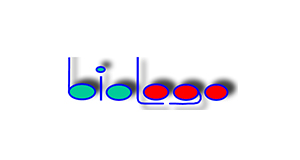Collagen Type I, Tuna fish
Collagen Type I, Tuna fish
Artikelnummer
BILCO20171-T-0.1
Verpackungseinheit
0,1 ml
Hersteller
BioLogo
Verfügbarkeit:
wird geladen...
Preis wird geladen...
Background: Type I Collagen usually exists as a heterotrimer formed by alpha 1(I) and alpha 2(I) chains and is found in bone, cornea, skin and tendon. In foetal tissues also homotrimers of alpha-1(I) are found, but they are not constituents of normal adult tissues. Collagens consist of a family of highly specialized glycoproteins of which at least 16 genetically distinct types are known to date. The basal unit of a collagen molecule consists of a triple-helical structure formed by 3 alpha-chains. Predominant amino acids are glycine, proline and hydroxproline. Regularly also lysines and hydroxylysines occur, which are responsible for cross-linkage and glycosylation of the protein chains. Different composition of alpha-chains and different glycosylation contribute to the high variability of collagens in different tissues and organs. Tunafish collagen type I.
Positive Control: Tunafish skin
Immunogen: Purified collagen type I from tuna fish skin
Purification Method: affinity purified antibody lyophilized from phosphate buffered solution; no BSA and preservative added!
Concentration: app. 1 mg/ml
References: 1. Rigo C., Hartmann D.J., Bairati A. - Electrophoretic and immunochemeical study of collagens from Sepia officinalis cartilage. Biochim. Biophys. Acta 2002, 1572, 77-84.
Caution: *These antibodies are intended for in vitro research use only. They must not be used for clinical diagnostics and not for in vivo experiments in humans or animals.
Positive Control: Tunafish skin
Immunogen: Purified collagen type I from tuna fish skin
Purification Method: affinity purified antibody lyophilized from phosphate buffered solution; no BSA and preservative added!
Concentration: app. 1 mg/ml
References: 1. Rigo C., Hartmann D.J., Bairati A. - Electrophoretic and immunochemeical study of collagens from Sepia officinalis cartilage. Biochim. Biophys. Acta 2002, 1572, 77-84.
Caution: *These antibodies are intended for in vitro research use only. They must not be used for clinical diagnostics and not for in vivo experiments in humans or animals.
| Artikelnummer | BILCO20171-T-0.1 |
|---|---|
| Hersteller | BioLogo |
| Hersteller Artikelnummer | CO20171-T-0.1 |
| Verpackungseinheit | 0,1 ml |
| Mengeneinheit | STK |
| Reaktivität | Various species |
| Klonalität | Polyclonal |
| Methode | Immunofluorescence, Immunohistochemistry (paraffin), Western Blotting, ELISA, Radioimmunoassay (RIA) |
| Wirt | Rabbit |
| Produktinformation (PDF) | Download |
| MSDS (PDF) |
|

 English
English







